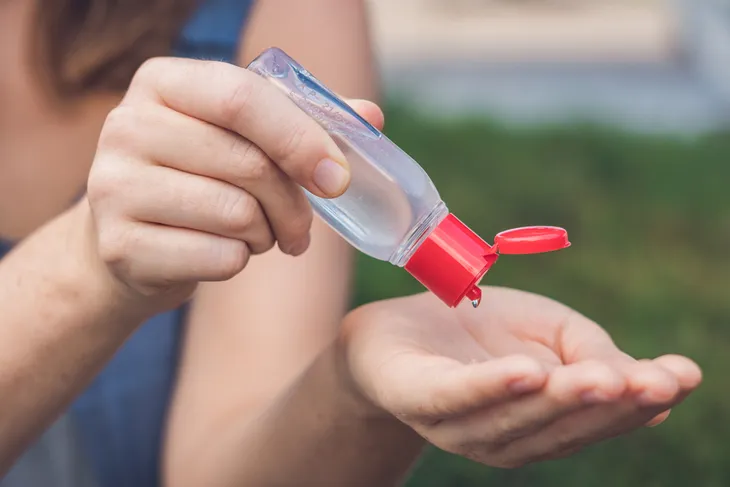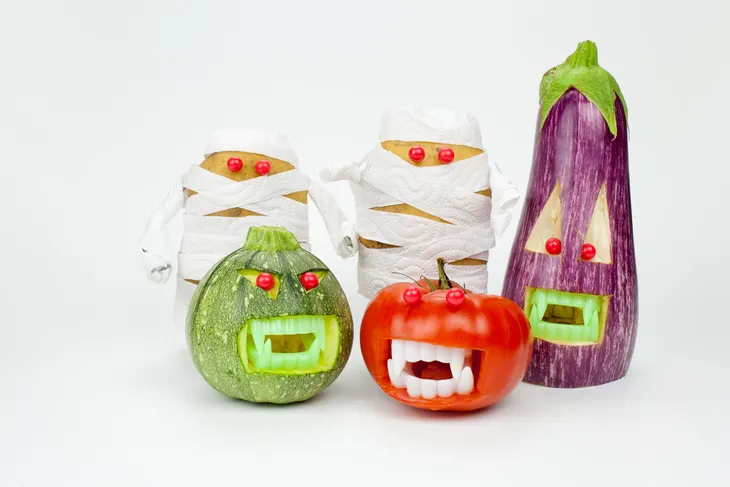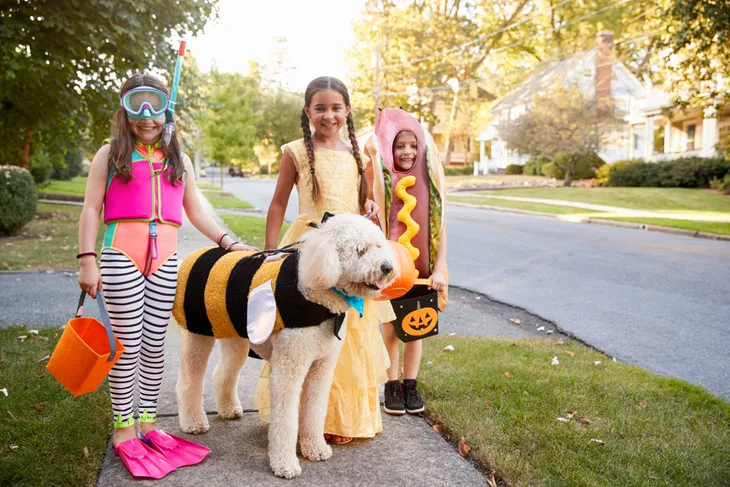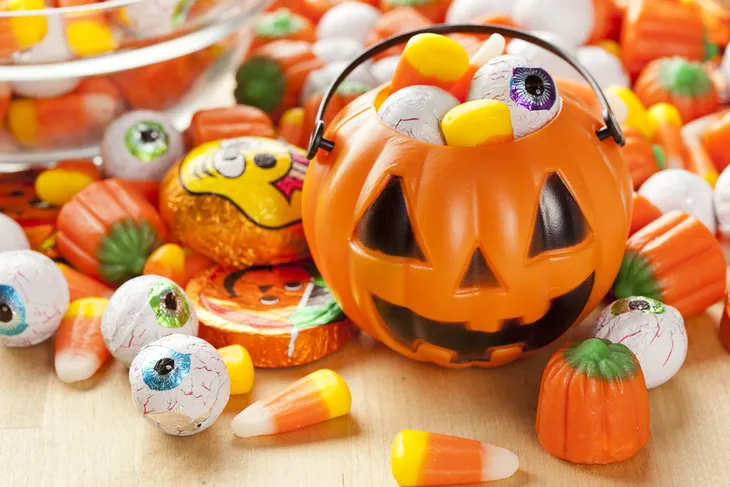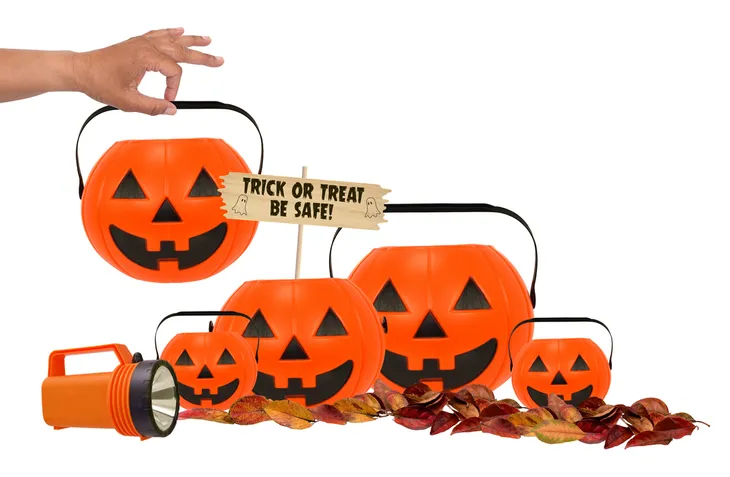Halloween is one of the most unique holidays—think about it, what other holiday encourages adults and children alike to dress up in costumes, wander around the neighborhood in the dark, and consume endless amounts of sugary candy?
Of course, given its nature, Halloween can be hazardous, particularly for children. That’s why parents should carefully consider the following suggestions for keeping Halloween both healthy and a lot of fun…
1. Bring Hand Sanitizer Along
Halloween, which falls at the end of October and about halfway through the fall season, takes place right around the time classmates and coworkers start to fall ill with seasonal colds. On top of that, going out trick-or-treating often involves exchanging items with complete strangers—it’s basically a recipe for catching a cold.
That’s why parents should take hand sanitizer with them and have kids clean their hands after every few houses. It’s a great way to wipe out allergies before they have the chance of making you or your kids sick.
2. Parcel Out The Candy
Left to their own devices, kids—and, let’s face it, some adults—will eat all of their candy in one or two sittings. That might be a lot of fun at the time, but will almost certainly leaving them feeling a little (or a lot) nauseous.
That’s why parents should take charge of the post-Halloween candy supply and ration out treats one or two at a time. It will help keep kids from over-indulging while helping to satisfy their sweet tooth.
3. Don’t Forget Fruits and Veggies
There’s no denying the close association between Halloween and candy. In North America, the holiday involves collecting and consuming copious amounts of sugary treats—a fun practice, but hardly a healthy one.
That’s why you shouldn’t let candy replace fruits and vegetables in your family’s diet this Halloween. Prepare healthy snacks (i.e., sliced apples, carrots or celery sticks) ahead of time, so it’s as easy for kids to grab and eat them as reaching for a pack of chocolate or potato chips. You can even have some fun and make your fruit tray Halloween themed.
4. Customize Your Costumes
You can excuse busy parents for buying one-size-fits-all costumes for themselves or their kids rather than making their own outfits. However, if a costume doesn’t fit properly, it can pose a significant health hazard—particularly when you or your kids are scrambling up unfamiliar stairs and down unknown driveways.
That’s why it’s important to try on all costumes well before hitting the streets of your neighborhood. Have kids wear their costumes around the house and watch to see if anything might become a problem (i.e., can they see out of that mask, are the pants too long, does anything drag on the ground?). Considering these questions could help prevent a nasty fall come the big night.
5. Travel in Groups
The only thing more dangerous than stumbling around the neighborhood at night is stumbling around the neighborhood completely alone. When heading out on the town—whether it’s for trick-or-treating or a Halloween party—make sure you’re joined by several others. In can help discourage mischief and will help you respond faster if there’s an accident.
For parents, it’s a good idea to team up when looking after a group of trick-or-treaters. That way, if someone gets hurt, one parent can address the situation while the other continues to look after the kids.
6. Carefully Examine Kids’ Candy Haul
For kids, there are few moments more exciting than exploring their candy haul after a long night of trick-or-treating around the neighborhood. But it’s very important that parents also participate in this activity, since it could help them spot food items that may not be safe for kids to eat.
While it’s unlikely that you’ll find anything obviously dangerous, such as a sharp object designed to hurt children, you may discover unsealed candy items or foods that have been made at home. While home-baked cookies and cupcakes add a nice touch, unless you know who prepared them it may be wise to throw them out.
7. Bring a Flashlight
Would you normally send your kids out into the neighborhood in the pitch black of a late autumn night? Probably not. Even if you’re accompanying your kids for their trick-or-treating this year—as you should—it’s wise to bring a flashlight.
Not only will a flashlight help light the way, it will reduce the changes that someone, particularly those wearing obstructive masks or long gowns, will be able to identify objects and obstacles in the road. In other words, one simple little device could prevent a serious trip or fall this Halloween.
8. Wear Comfortable and Weather-Appropriate Shoes
By falling smack dab in the middle of the autumn season, Halloween can bring a warm evening, a chilly night or driving, bitter rain or (gasp) snow. And some years it could bring all three.
That’s why it’s so important to wear weather-appropriate footwear. They might not match the costume, but rain boots will prevent little feet from getting cold, wet and sore. If you live in the north, don’t hesitate to send kids out in snow boots that might prevent a slip on black ice. And if you’re lucky enough to have a relatively warm Halloween evening, make sure everyone wears comfortable walking shoes.

